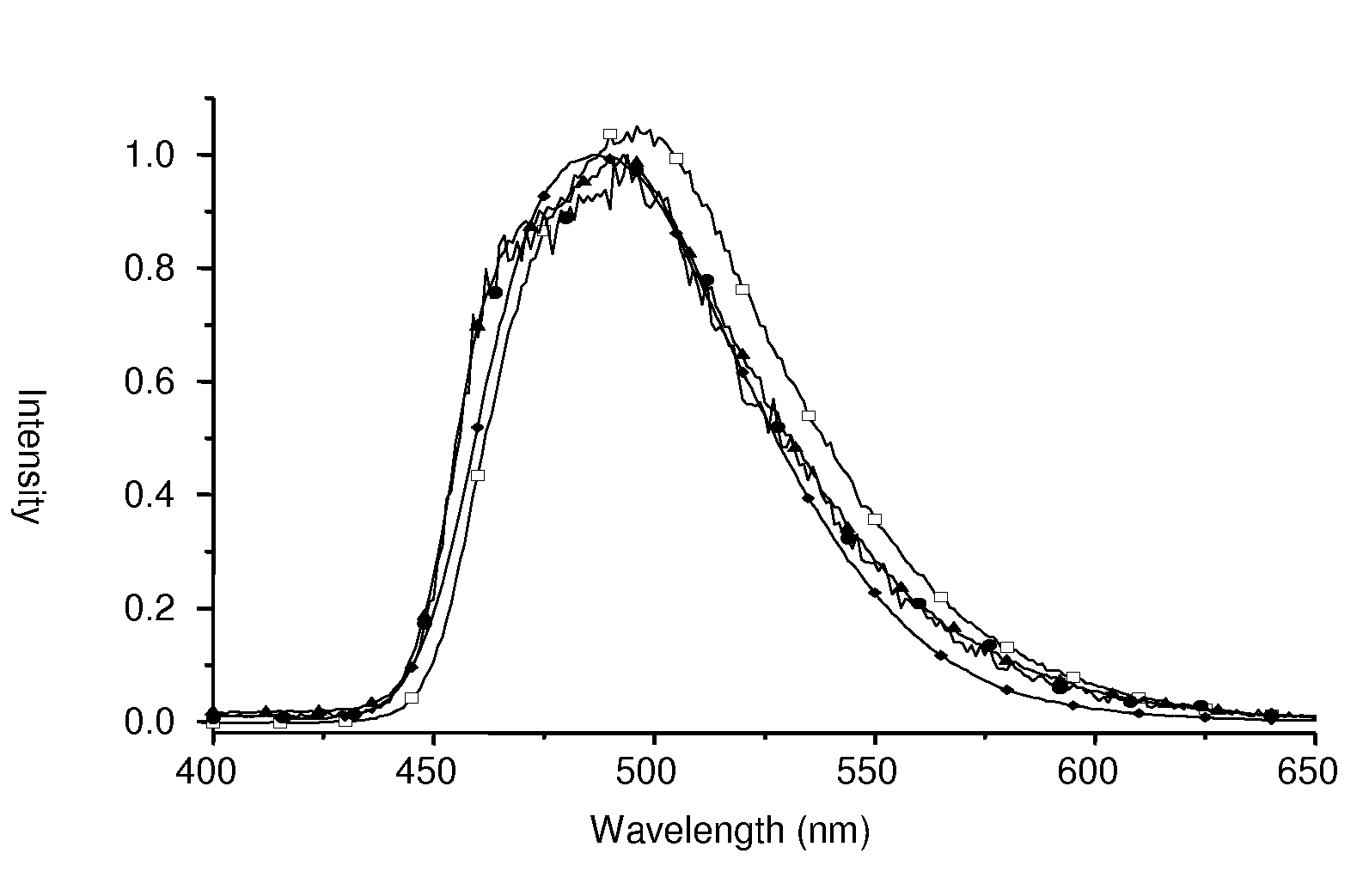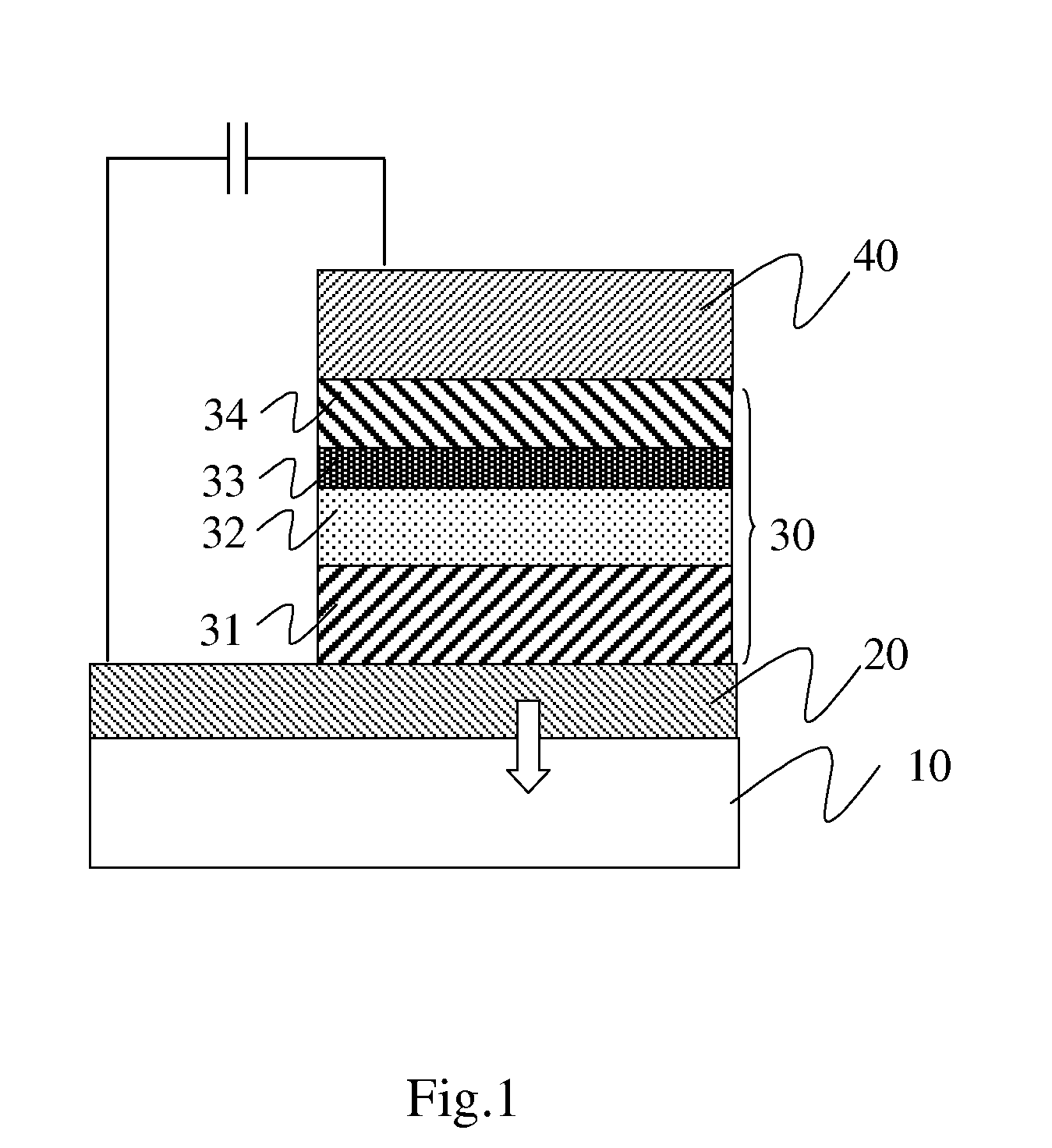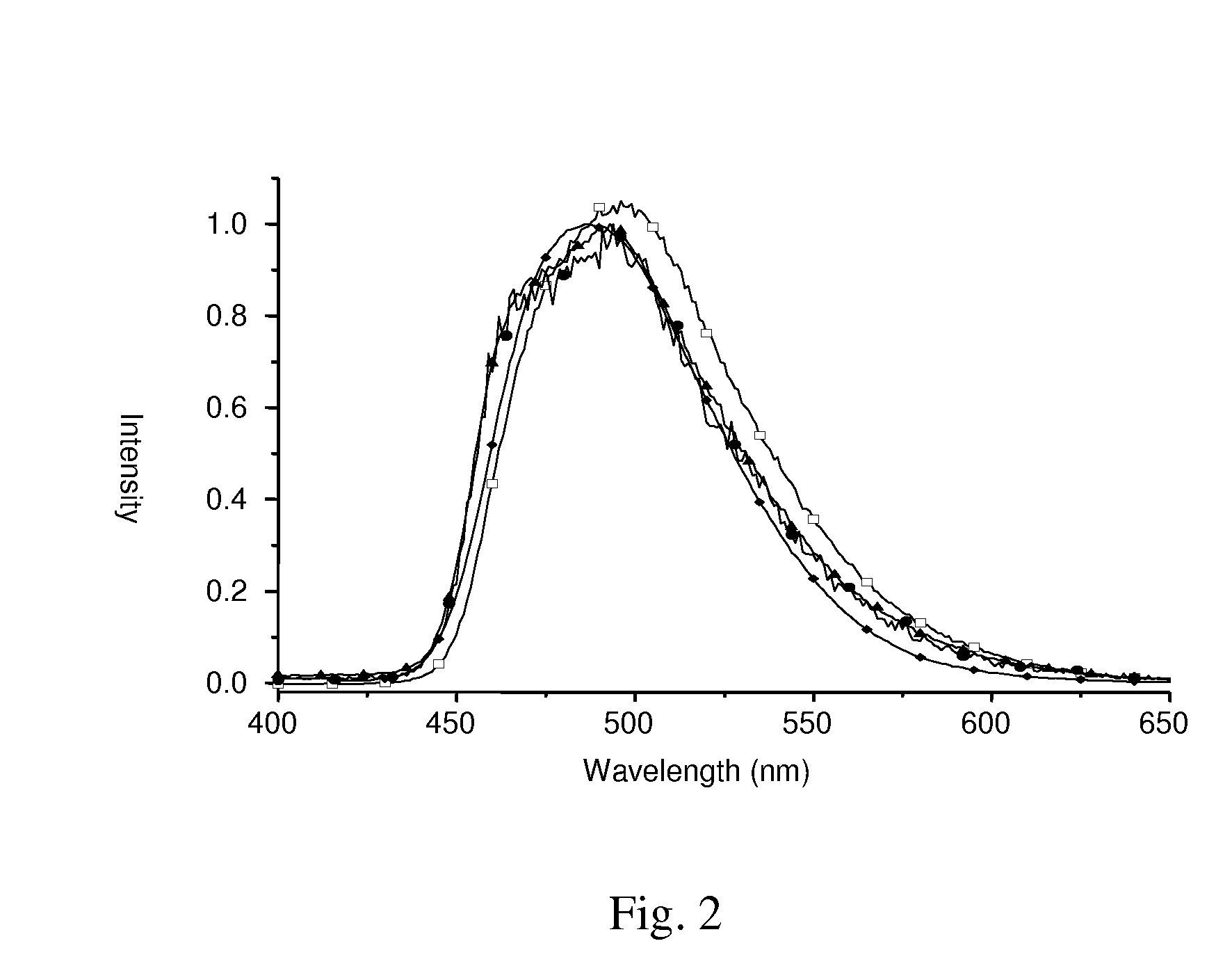Class of luminescent iridium(III) complexes with 2-(diphenylphosphino)phenolate ligand and organic electroluminescent device thereof
- Summary
- Abstract
- Description
- Claims
- Application Information
AI Technical Summary
Benefits of technology
Problems solved by technology
Method used
Image
Examples
example 1
General Methods
[0047]Reactions were performed under nitrogen. Solvents were distilled from appropriate drying agent prior to use. Commercially available reagents were used without further purification unless otherwise stated. Reactions were monitored by TLC with Merck pre-coated glass plates (0.20 mm with fluorescent indicator UV254). Compounds were visualized with UV light irradiation at 254 nm and 365 nm. Flash column chromatography was carried out using silica gel from Merck (230-400 mesh). Mass spectra were obtained on a JEOL SX-102A instrument operating in electron impact (EI) mode or fast atom bombardment (FAB) mode. 1H and 13C NMR spectra were recorded on Varian Mercury-400 or INOVA-500 instruments; chemical shifts are quoted with respect to the internal standard tetramethylsilane for 1H and 13C NMR data.
example 2
Synthesis of [(dfppy)2Ir(dppp)] and Derivatives
[0048]A 25 mL flask was charged with [(dfppy)2Ir(μ-Cl)]2 (122 mg, 0.1 mmol), 2-(diphenylphosphino)phenol (dpppH, 61 mg, 0.22 mmol), Na2CO3 (106 mg, 1.0 mmol) and 2-methoxyethanol (10 mL). After the mixture was heated at 120° C. for 1.5 h, the reaction was quenched by addition of excess water (15 mL). The precipitate was filtered and washed with anhydrous ethanol and diethyl ether in sequence. The product was purified by silica gel column chromatography using EA / hexane=1:1 as eluent, followed by recrystallization from a mixture of CH2Cl2 and hexane at RT, giving a pale yellow crystalline solid [(dfppy)2Ir(dppp)] (53 mg, 0.06 mmol) in 56% yield. The related Ir(III) complexes [(dfppy)2Ir(4Tdppp)], [(dfppy)2Ir(6Tdppp)], and [(dfppy)2Ir(4Fdppp)] were prepared using similar procedures; yield 46% ˜56%.
[0049]FIG. 2 depicts emission spectra of Ir(III) complexes [(dfppy)2Ir(dppp)], [(dfppy)2Ir(4Tdppp)], [(dfppy)2Ir(6Tdppp)] and [(dfppy)2Ir(4Fdppp...
example 3
Synthesis of [(ppy)2Ir(dppp)] and Derivatives
[0054]A 25 mL flask was charged with [(ppy)2Ir(μ-Cl)]2 (107 mg, 0.1 mmol), 2-(diphenylphosphino)phenol (dpppH, 61 mg, 0.22 mmol), Na2CO3 (106 mg, 1.0 mmol) and 2-methoxyethanol (10 mL). The mixture was allowed to heat at 120° C. for 1.5 h. After the solution was cooled to RT, the reaction was quenched by addition of deionized water (15 mL). The precipitate was filtered and washed with anhydrous ethanol and diethyl ether in sequence. Purification was carried out by silica gel column chromatography using pure EA as eluent, followed by recrystallization from a mixture of CH2Cl2 and hexane at RT, giving a pale yellow crystalline solid [(ppy)2Ir(dppp)] (80 mg, 0.05 mmol) in 51% yield. Synthesis of related derivative complexes [(ppy)2Ir(6Tdppp)], and [(ppy)2Ir(4Fdppp)] followed similar experimental procedures; yield 55˜58%.
[0055]FIG. 3 depicts emission spectra of Ir(III) complexes [(ppy)2Ir(dppp)], [(ppy)2Ir(6Tdppp)] and [(ppy)2Ir(4Fdppp)] in C...
PUM
 Login to View More
Login to View More Abstract
Description
Claims
Application Information
 Login to View More
Login to View More - R&D
- Intellectual Property
- Life Sciences
- Materials
- Tech Scout
- Unparalleled Data Quality
- Higher Quality Content
- 60% Fewer Hallucinations
Browse by: Latest US Patents, China's latest patents, Technical Efficacy Thesaurus, Application Domain, Technology Topic, Popular Technical Reports.
© 2025 PatSnap. All rights reserved.Legal|Privacy policy|Modern Slavery Act Transparency Statement|Sitemap|About US| Contact US: help@patsnap.com



